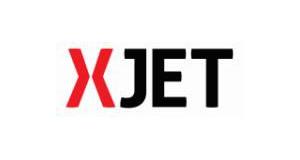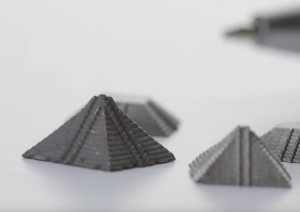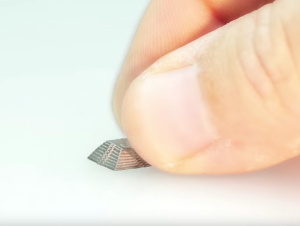 Israeli metal 3D printing technology manufacturer XJet announced that they have just completed a successful and lucrative round of funding that has brought them $25 million in new investments. The primary source of the new investments was led by Catalyst CEL, an Israeli-Chinese private equity fund. XJet also received significant financial backing from software development company Autodesk. The investment will be used for their continued development of their new NanoParticle Jetting metal 3D printing process. The partnership with Catalyst CEL is expected to aid them in bringing their technology to the global market and in penetrating the Chinese industrial additive manufacturing market.
Israeli metal 3D printing technology manufacturer XJet announced that they have just completed a successful and lucrative round of funding that has brought them $25 million in new investments. The primary source of the new investments was led by Catalyst CEL, an Israeli-Chinese private equity fund. XJet also received significant financial backing from software development company Autodesk. The investment will be used for their continued development of their new NanoParticle Jetting metal 3D printing process. The partnership with Catalyst CEL is expected to aid them in bringing their technology to the global market and in penetrating the Chinese industrial additive manufacturing market.
The XJet NanoParticle Jetting metal 3D printing process was just announced late last year and has already gotten industrial manufacturers’ tongues wagging with possibilities. The technology uses liquid metal inks that are printed using inkjet technology. The ink material is made from a solid metal nanoparticle that is suspended inside of a liquid. The liquid metal ink is stored securely inside of removable and reusable cartridges that can be loaded and unloaded similarly to other cartridges used in inkjet printers. The sealed cartridge system eliminates the need for machine operators to come into contact with messy and potentially toxic metal powders and materials.
The process works by depositing a super-fine layer of liquid metal droplets onto the printing envelope using ink jet printing technology similar to a standard 2D printer. The ink is printed on to the build envelope along with a support substrate material that maintains the integrity of the part while it is being fabricated. The process is completed with a simple sintering process, once the ink is exposed to extremely high levels of heat the liquid material evaporates and forces the metal nanoparticles to bond into a metal object. The support material can easily be cleaned away after the printing has been completed.
- Sample print detail
- Sample metal part
- super-fine detail
XJet says that the finished object is a fully solid metal part with metallurgy that is indistinguishable from traditionally manufactured metal parts. Because the process uses basic bed 3D printing technology there are virtually no limits to the printed parts’ geometries or shapes. The result is metal parts that are quickly manufactured and require very little post-processing time. Currently the liquid metal material is restricted to a stainless steel ink, however XJet is developing similar liquid metals and is expected to soon offer several different varieties of metal nanoparticles.
Here is a video about XJet and their NanoParticle Jetting metal 3D printing process:
The company now known as XJet was originally founded by Hanan Gothait back in 2005. As a veteran of the inkjet printing industry, Gothait hoped to leverage his experience to to develop a printing process that could quickly fabricate solar panels. In 2013 they expanded their business into additive manufacturing and quickly raised 22 million dollars to transition into their new sector and develop their advanced metal 3D printing technology. XJet presented their NanoParticle Jetting process at 2015’s Go4Israel conference where they found several companies looking to invest and utilize their technology. Discuss in the XJet 3D Printing Manufacturer forum over at 3DPB.com.
Subscribe to Our Email Newsletter
Stay up-to-date on all the latest news from the 3D printing industry and receive information and offers from third party vendors.
Print Services
Upload your 3D Models and get them printed quickly and efficiently.
You May Also Like
Heating Up: 3D Systems’ Scott Green Discusses 3D Printing’s Potential in the Data Center Industry
The relentless rise of NVIDIA, the steadily increasing pledges of major private and public investments in national infrastructure projects around the world, and the general cultural obsession with AI have...
Formlabs Teams Up with DMG MORI in Japan
In late June, Nick Graham, Chief Revenue Officer at Formlabs, announced on LinkedIn that the company had partnered with DMG MORI, one of the world’s leading machine tool companies, to...
EOS in India: AM’s Rising Star
EOS is doubling down on India. With a growing base of aerospace startups, new government policies, and a massive engineering workforce, India is quickly becoming one of the most important...
3D Printing News Briefs, June 25, 2025: R&D Materials, 3D Printed Veneers, & More
In today’s 3D Printing News Briefs, 3DXTECH has launched a program that gives customers early access to experimental materials, and the first Lithoz CeraFab Multi 2M30 in the Czech Republic...








































